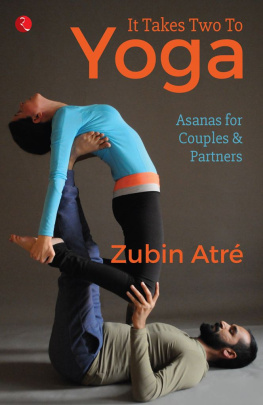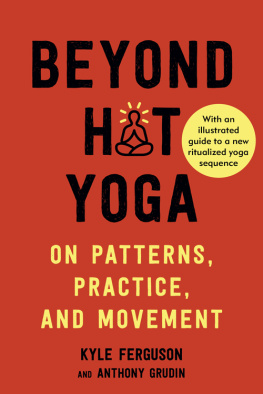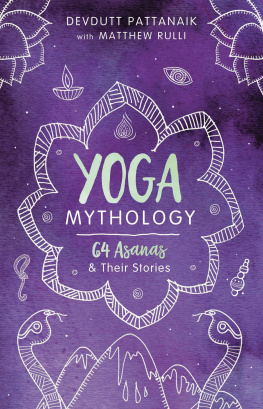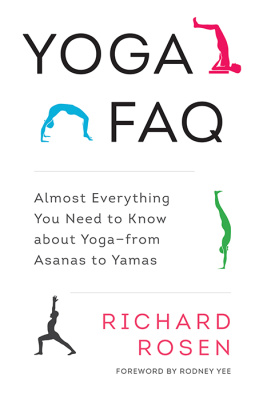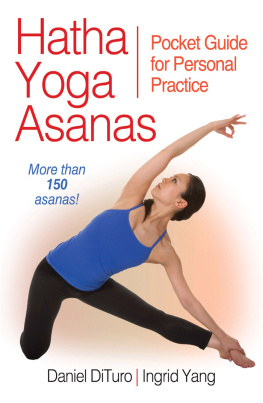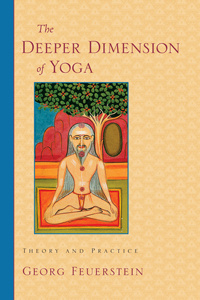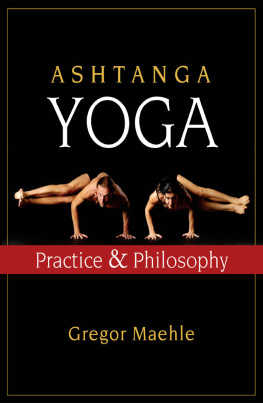
The founder of the AtrYoga Studio in New Delhi, Zubin Atr has more than 9,000 hours of experience teaching yoga. He has designed sports yoga programmes for ace athletes, stress and energy management courses for multinationals and transformational programmes for couples and individuals.
Dipping into his knowledge of the human anatomy, yoga and psychology, Zubin has developed a unique style of teaching. This comprises a series of meticulously crafted asanas, all of which convey his commitment to detail, to an interactive learning experience and to making the wisdom of yoga relevant to real-life situations.
Zubin writes regularly for and has been featured in major publications, newspapers and magazines, besides appearing in television shows in India and abroad. He holds a degree in business, and when not teaching yoga, likes to travel, learn languages, write and go exploring by motorbike (this, he refers to as a form of meditation).
Zubin divides his time between Asia and Europe, conducting workshops and retreats. You can learn more about him and his programmes at www.zubinatre.com and www.atreyogastudio.com and follow him on Twitter @zubinatre.
Models: Zubin Atr is the male model. Sara Zennaro Atr, the female model, is a certified yoga teacher. She has been practising yoga since her childhood. She has carried her passion for yoga with her across several countries in Latin America, the Middle East and Asia, where she has lived and worked as an international civil servant.

Published by
Rupa Publications India Pvt. Ltd 2016
7/16, Ansari Road, Daryaganj
New Delhi 110002
Text and Photographs Copyright Zubin Atr 2016
Photographs by Marino Dal Borgo and Marina Tavellin
The views and opinions expressed in this book are the authors own and the facts are as reported by him which have been verified to the extent possible, and the publishers are not in any way liable for the same.
While every effort has been made to verify the authenticity of the information contained in this book, it is not intended as a substitute for medical consultation with a physician. The publisher and the author are in no way liable for the use of the information contained in this book.
All rights reserved.
No part of this publication may be reproduced, transmitted, or stored in a retrieval system, in any form or by any means, electronic, mechanical, photocopying, recording or otherwise, without the prior permission of the publisher.
ISBN: 978-81-291-3967-2
First impression 2016
10 9 8 7 6 5 4 3 2 1
The moral right of the author has been asserted.
This book is sold subject to the condition that it shall not, by way of trade or otherwise, be lent, resold, hired out, or otherwise circulated, without the publishers prior consent, in any form of binding or cover other than that in which it is published.
To my brother Ashish Atr
whose trust in me never fails to surprise me
CONTENTS
A NOTE FROM THE AUTHOR
Everyone can practise partner yoga, from parents and children, to husbands and wives, and colleagues. The asanas technically remain the same no matter what the nature of the collaboration is. However, the form of non-verbal communication, the energy, the emotions and, by consequence, the benefits associated with the asanas, will vary based on ones association with ones companion.
No prior yogic experience is required to practise partner yoga. However, be gentle with your body if you are a beginner. Remember that you are not in competition with anyone else. Also, always maintain a positive outlook. This is particularly important in the context of partner yoga since it is fun! Youll find yourself laughing with your yoga-buddy about the postures you are attempting. You might lose your balance, and may have to start from scratch, but finally, when you secure a good grip of your partners ankles, wrists or arms, you will not only enjoy completing the asana, but also have memories that are truly amusing.
In addition, while attempting to get comfortable in a posture, remember the no-one-asana-fits-all rule. Each individual has a specific body structure, a different level of flexibility and strength. So, instead of forcing the body into the perfect pose, the serious yoga practitioner adapts an asana to suit her/his body type, flexibility or strength and medical history. In other words, the asana should fit the yogi and not the other way around.
Finally, always consult a physician to evaluate your medical condition before attempting any kind of yoga, and follow the medical advice you are given.
INTRODUCTION
ITS ALL ABOUT TOUCH:
AN INITIATION INTO PARTNER YOGA
O n the ceiling of the Sistine Chapel in Vatican City, we can see a beautiful frescoMichelangelos Creation of Adamwith God stretching out his finger to grant Adam the spark of life. This is how the story beginsnot just of Adam, but of all mankind. With touch. To quote Michelangelo: To touch can be to give life.
Therefore, when two people meldwhen they adopt partner yoga, instead of individual yogathe impact and the experience of their practice deepens on account of touch.
To understand the features and benefits of partner yoga, we have to start from the most basic unitjust as we would start with the foundation if we had to build a house. In this case, we must begin with the full appreciation of a termyoga. Born in India thousands of years ago, yoga means union and is derived from the yoking together of the mind and the body. Its practice helps one transcend the physical and mental planes to establish a spiritual union with the divine (usually experienced while in a deep state of meditation).
The intent guiding yoga, therefore, goes beyond acquiring a physically fit, astonishingly flexible body. But the practice of yoga must start at the physical level with an asana or posture. Yogic asanas are vital for the practitioner to develop both the physical strength to hold a stable and comfortable meditative position, and the mental strength and focus to calm the restless mind.
THE IMPORTANCE OF TOUCH
Interestingly enough, touch is the first of the five senses that human beings develop when they are still in their mothers wombas early as in the eighth week after conception. The first part of a babys body to experience any kind of sensitivity is the cheek. This sensation quickly extends to the palms at eleven weeks, and the soles of the feet at twelve weeks. In the womb, the baby experiments with this newfound sense of touch by stroking her or his face or sucking on a thumb, as well as feeling other body parts and seeing how they move. In the last trimester of pregnancy, when space becomes an issue, the babys body presses against the womb-wall. Gentle patting and stroking alerts the baby to the mothers touch, and the baby may respond by calming down or kicking and nudging.
After birth, during the first few months of life, babies rely on grown-ups for tactile stimulation and comfort. They dont move much initially, but by the fourth month, they are able to reach out and touch whatever is nearby, such as blankets, toys and a parents face. At about eight months, babies can touch and identify familiar objects without seeing them. In other words, their tactile sense actually helps them understand what the object is. The skin becomes the first point of physical contact with the outside world.
As babies grow, it is through such physical contact that they are able to feel the world and make sense of their physical beings. It is through tactile sensation that they are able to find pleasure in holding a warm blanket on a cold winter morning, or find joy in a dog rubbing against their feet.
Next page
